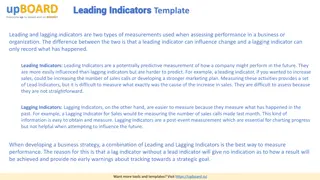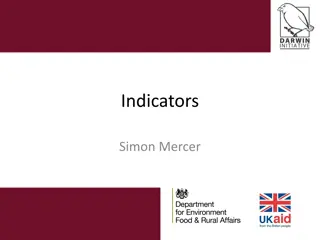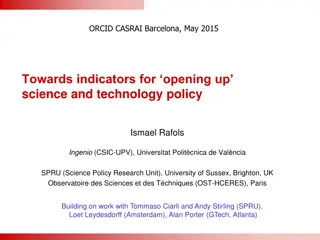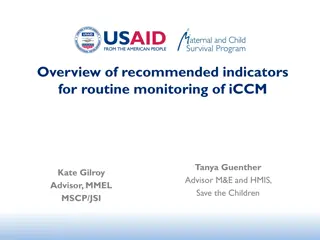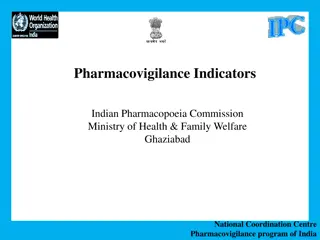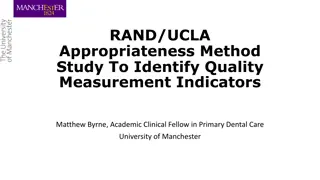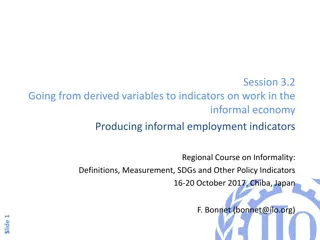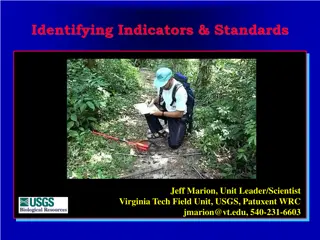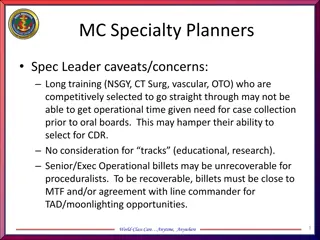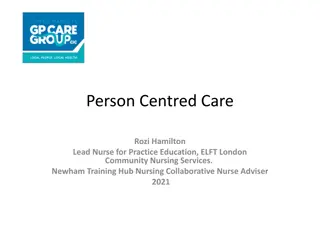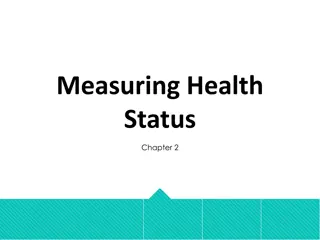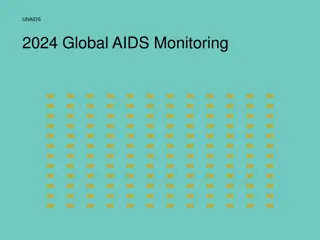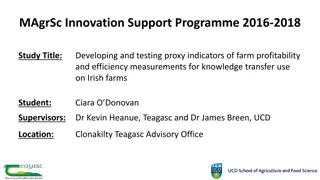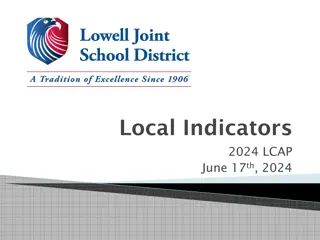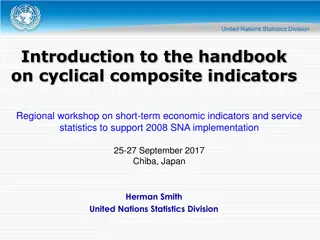Advice on Identifying Operational Indicators and Threshold Values for Criterion D3C3 under MSFD Decision (EU) 2017/848
Fish populations with healthy structures require a high proportion of old/large individuals, diverse age structures, high productivity, and resilience. Eight key indicators have been identified to monitor changes, with fishing mortality impacting indicator values. Historical trend analysis and simulation tests were conducted for validation.
Download Presentation

Please find below an Image/Link to download the presentation.
The content on the website is provided AS IS for your information and personal use only. It may not be sold, licensed, or shared on other websites without obtaining consent from the author. Download presentation by click this link. If you encounter any issues during the download, it is possible that the publisher has removed the file from their server.
E N D
Presentation Transcript
EU request on identifying operational EU request on identifying operational indicators and defining usable threshold indicators and defining usable threshold values (reference points) for criterion D3C3 values (reference points) for criterion D3C3 under MSFD Decision (EU) 2017/848 under MSFD Decision (EU) 2017/848 Advice of 23 February 2024 https://doi.org/10.17895/ices.advice.25265284 Presented by: Simon Jennings ACOM vice-chair
D3C3: Request (five elements: summarised) 1. Define characteristics of healthy population structure and indicators for these characteristics. 2. Identify thresholds for these indicators. 3. Explore relationships between population traits/dynamics, indicator values and thresholds through simulations. Infer when management (CFP, MSFD D3C1 and D3C2) may be insufficient to achieve healthy population structure . 4. Advise on indicators and thresholds for D3C3 assessment for species with different life history characteristics, giving preference to indicators from easily collected data. 5. Prepare a framework for comprehensively assessing D3 criteria for commercially- exploited fish and shellfish populations, including data-limited stocks. Advice Drafting Group: some reflections on scale and scope of request
D3C3: Knowledge synthesis and peer review Review Group All workshops chaired by Anna Rindorf and Giuseppe Scarcella. Review group chaired by Lena Bergstr m. Sources: http://doi.org/10.17895/ices.pub.25266475, http://doi.org/10.17895/ices.pub.25266580, https://doi.org/10.17895/ices.pub.23514930
D3C3: Summary of advice Fish populations with a healthy population structure are operationally characterized by a high proportion of relatively old/large individuals, wide age structures, high productivity, and the ability to resist and quickly recover from disturbances. Eight state indicators (retained after screening and testing) describing recruitment, growth of individuals, and age or length structure, are suitable to track changes in population structure in a wide range of populations. One or more of these eight indicators may be necessary to capture all aspects of D3C3.
D3C3: Summary of advice Values of the retained indicators covering recruitment, growth of individuals, and age or length structure were related to changes in fishing mortality. Based on: Analysis of historical trends in six of the eight state indicators for 81 populations Simulation testing of five of the eight state indicators for seven of the 81 populations Simulation testing of two of the eight state indicators for three (additional) Mediterranean populations
D3C3: the retained indicators Indicator Indicator (full name) Short description Proportion of older fish in a population (in a given year) relative to the proportion of older fish at equilibrium under constant fishing at FMSY ABIMSY ABIMSY Proportion of old spawners by biomass Average age of spawners SSB as a proportion of recruitment Recruitment 90th percentile of length of individuals in the population 90th percentile of length of individuals in the population, excluding recruits Average spawner weight POS Spawning-stock biomass (SSB) of older fish as a proportion of total SSB ASA Average spawner age, weighted by cohort biomass SSB/R SSB and recruitment from stock assessment output R Recruit numbers from stock assessment outputs L90 90th percentile of length of individuals in the population L90R 90th percentile of length of individuals in the population, excluding recruits ASW Average spawner weight, weighted for differences in weight at age of cohorts Sources: Griffiths et al. (2024); van Deurs et al. (2023); Probst (2023); ICES (2023); full references in the advice
D3C3: Summary of advice: historical trends Frec/Fbar Indicators F SSB Indicators
D3C3: Summary of advice: simulations Responses to fishing mortality by indicator: fixed selectivity Fishing mortality
D3C3: Summary of advice: thresholds ICES was unable to advise on threshold values for any of the retained and tested state indicators. The eight retained and tested indicators are suitable for describing aspects of change in population structures associated with fishing at or below FMSY, and retained indicators for age and length structure are suitable for assessing whether a population has an age or length structure in accordance with meeting targets for both D3C1 and D3C2 over the long term. Evaluation of the retained indicators primarily requires age-structured stock assessment data. This would currently limit application to many populations and regions, although data-limited approaches could be developed with further work.
D3C3: Summary of advice: frameworks Based on available evidence, ICES was unable to test and advise on a framework for comprehensively assessing D3 criteria for commercially exploited fish and shellfish populations. If thresholds are eventually established for some, or all, of the retained and tested indicators for D3C3, then a framework for assessing D3 criteria could be developed for populations with age-structured stock assessment data. Individual assessments could still be progressed at population and regional levels in the absence of a wider framework.




